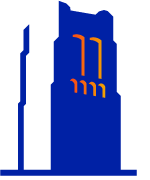Anne Fountain argues that it was in the United States that Martí--confronted by the forces of manifest destiny, the influence of race in politics, the legacy of slavery, and the plight and promise of the black Cuban diaspora--fully engaged with the specter of racism. Examining Martí's complete works with a focus on key portions, Fountain reveals the evolution of his thinking on the topic, indicating the significance of his sources, providing a context for his writing, and offering a structure for his works on race.
Buy Books: browse by title
A - B - C - D - E - F - G - H - I - J - K - L - M - N - O - P - Q - R - S - T - U - V - W - X - Y - ZPlease note that while you may order forthcoming books at any time, they will not be available for shipment until shortly before publication date
In wonder and gratitude, prize-winning photographer John Moran travels the Sunshine State with his cameras, seeking his vision of natural Florida as it must have appeared to Ponce de Leon and other early strangers in paradise.
In June, 1836, 24-year-old Jacob Rhett Motte, a Harvard-educated Southern gentleman trained as a surgeon, departed his hometown of Charleston to serve as an Army surgeon in wars against the Creek and Seminole Indians. Motte, who had a genuine literary flair, began keeping a journal – “While witnessing the dreadful scenes of Indian warfare, I was also impressed with the conviction that descriptions of horrible massacres, imminent and hair-breadth escapes, bloody battles, and dreadful murders have always been subjects of interest to the human mind,” he later wrote.
When Ray Whaley set out to accomplish his bucket-list goal of kayaking the length of the St. Johns River, it didn’t take long for him to realize he was in over his head. The longest river in Florida, stretching 310 miles between Vero Beach and Jacksonville, the St. Johns had been paddled in its entirety by only a handful of people. Whaley found himself blazing his own trail on an exciting and unexpected adventure.
Following the original steps of pioneering naturalists, Gail Fishman profiles thirteen men who explored North America’s southeastern wilderness between 1715 and the 1940s, including John James Audubon, Mark Catesby, John and William Bartram, and John Muir.
Joyce and Geometry reveals the full extent to which the modernist writer James Joyce was influenced by the radical theories of non-Euclidean geometry. Tracing Joyce’s obsession with measuring and mapping space throughout his works, Ciaran McMorran delves into a major theme in Joyce’s work that has not been thoroughly explored until now.
In Joyce and Militarism, Greg Winston considers Joyce's masterworks in light of the longstanding shadows that military culture and ideology cast over the society in which the writer lived and wrote.











